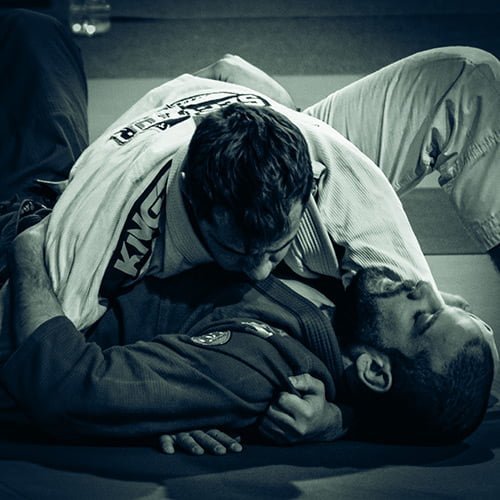Jiu Jitsu Submission Techniques
Jiu Jitsu Techniques for beginners. Basic BJJ submission techniques great for self defense and also help improve your martial arts skills in getting your opponents to submit.
Jiu Jitsu Submission Techniques
There are many different Jiu Jitsu techniques that can be used in a fight. Some of the most common techniques are chokes and joint locks. Chokes are used to cut off the blood supply to the brain, while joint locks are used to injure the opponent’s joints.

However, these submission techniques can be very dangerous and require practice to avoid hurting your opponent.
Once we understand these things, we can begin to learn the different techniques used in BJJ. Common techniques used in BJJ are the guard pass, mount, side control, triangle choke, armbar, and guillotine.
Jujutsu techniques are also very effective in a fight.
These techniques are based upon throwing your opponent to the ground and holding them so they can’t move. Some of the combinations of techniques that can be used in a fight include a choke, a joint lock and a throw. This type of combination, when done by a highly trained fighter, can quickly defeat an untrained opponent.
Chokes can be accomplished by using the legs, or arms in tandem with the body.
One of the most common locks is the triangle choke, which is achieved by positioning the opponent’s head in your armpit, while moving your arm to circle the opponent’s neck. This cuts off the blood supply to the brain, creating unconsciousness after 20-30 seconds. One of the most devastating locks is the arm bar.
If you are looking for a form of self-defense, you should consider learning Jiu Jitsu. It’s a viable self-defense tool that can help protect you if you ever need to protect yourself while on the street.
If you are going to learn, Jiu Jitsu is a great way to get in shape.
Sparring and rolling requires that you keep your body fit by raising your heart rate and getting your blood pumping.
In order to control your opponent, you will need to use various types of holds. The clasps you’ll use to secure your opponent will depend on your opponent’s movements. Learn the different clasps in order to gain a better understanding of how to control and attack your opponent.
When you are on the bottom, you don’t have to worry about what your opponent is doing. That’s because you will be focusing on escaping from being pinned to the floor.
Some of the more common submission moves are described below
The Triangle Choke: In this choke, you wrap a leg around your opponent’s head in order to make a triangle shape.
The Rear Naked Choke: This choke is applied using your arms and it is used to cut off the blood supply to the brain.
Jiu Jitsu submissions techniques
Brazilian jiu-jitsu is a martial art, combat sport, and self-defense system that focuses on grappling and especially ground fighting. Brazilian jiu-jitsu was formed from Kodokan judo ground fighting (newaza) fundamentals that were taught by a number of Japanese individuals including Takeo Yano, Mitsuyo Maeda and Soshihiro Satake. Brazilian jiu-jitsu eventually came to be its own defined combat sport through the innovations, practices, and adaptation of judo.
Brazilian jiu-jitsu is a grappling-based martial art whose central theme is the skill of controlling an opponent in ways that force him or her to submit. It has been proven to be an effective martial art for self-defense as well as a sport. The art and sport can be practiced by people of all ages and levels of physical fitness.
There are a variety of submissions available in Brazilian jiu-jitsu. Some of the more common submissions are:
Rear-naked choke:
A chokehold that cuts off the flow of blood to the brain by compressing the carotid arteries on either side of the neck.
VIEW VIDEO HERE
Triangle choke:
A chokehold that cuts off the flow of blood to the brain by compressing the carotid arteries and the jugular vein. A triangle choke is a move where you trap your opponent’s head and one of their arms in order to force them to tap out.
VIEW VIDEO HERE
Armbar:
A move that hyperextends the elbow, causing the opponent to submit. An armbar is a move where you extend your opponent’s arm in order to force them to tap out.
VIEW VIDEO HERE
Guillotine choke:
A chokehold that cuts off the flow of blood to the brain by compressing the carotid arteries. A guillotine choke is a move where you trap your opponent’s head in your arm in order to force them to tap out.
VIEW VIDEO HERE

Kimura:
A shoulder lock that hyperextends the elbow and hyperextends the shoulder. A kimura is a move where you trap your opponent’s arm in order to force them to tap out.
VIEW VIDEO HERE
Americana:
A shoulder lock that hyperextends the elbow. An americana is a move where you trap your opponent’s arm in order to force them to tap out.
VIEW VIDEO HERE
Omoplata:
A shoulder lock that hyperextends the elbow and hyperextends the shoulder. An omoplata is a move where you trap your opponent’s arm in order to force them to tap out.
VIEW VIDEO HERE
Anaconda choke:
A chokehold that cuts off the flow of blood to the brain by compressing the carotid arteries. An anaconda choke is a move where you trap your opponent’s head and one of their arms in order to force them to tap out.
VIEW VIDEO HERE
Darce choke:
A darce choke is a move where you trap your opponent’s head in your arm in order to force them to tap out.
VIEW VIDEO HERE
Ezekiel choke:
A chokehold that cuts off the flow of blood to the brain by compressing the carotid arteries and the jugular vein.
VIEW VIDEO HERE
Gogoplata:
A chokehold that cuts off the flow of blood to the brain by compressing the carotid arteries and the jugular vein.
VIEW VIDEO HERE
Flying armbar:
A move that hyperextends the elbow, causing the opponent to submit. A flying armbar is a move where you extend your opponent’s arm in order to force them to tap out.
VIEW VIDEO HERE
Rear-naked choke:
A rear-naked choke is a move where you trap your opponent’s head in your arm in order to force them to tap out
VIEW VIDEO HERE
Shoulder lock:
A move that hyperextends the elbow and hyperextends the shoulder.
VIEW VIDEO HERE
Wrist lock:
A move that hyperextends the wrist, causing the opponent to submit.
VIEW VIDEO HERE
Heel hook:
A move that hyperextends the knee, causing the opponent to submit.
VIEW VIDEO HERE
Kneebar:
A move that hyperextends the knee, causing the opponent to submit.
